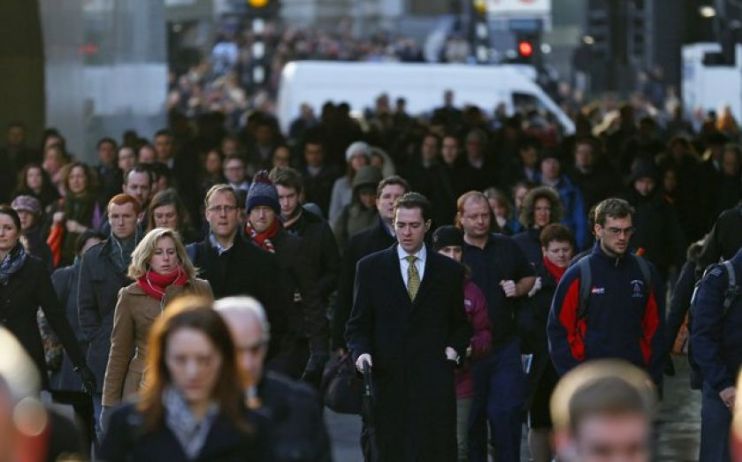UK unemployment rate rises as Brexit fears hit labour market

The UK’s unemployment rate rose in the latest quarter, according to data released today, coming off a long running 45-year low as Brexit hit the labour market.
Unemployed workers rose by 0.1 percentage points compared to the previous quarter to 3.9 per cent between June and August, Office for National Statistics (ONS) figures showed.
Read more: The UK’s last drop in unemployment pushed earnings to a 10-year high
The UK employment rate stood at 75.9 per cent, 0.2 percentage points lower than the last quarter.
ONS deputy head of labour market statistics Matt Hughes said: “The employment rate is still rising year-on-year, but this growth has cooled noticeably in recent months. Among the under-25s, the employment rate has actually started to fall on the year.
“Pay growth continues to outstrip inflation, as it has done for over 18 months now.”
Economists warned this was a “markedly weaker jobs report” than expected.
“The hitherto resilient UK labour market is increasingly buckling in the face of a struggling UK economy and heightened Brexit and domestic political uncertainties,” Howard Archer, chief economic adviser to the EY Item Club, said.
“On top of this is a weakened and uncertain global economic environment.”
The pound fell from $1.268 before the economic figures came out to $1.261 after the release.
Jing Teow, economist at PwC, said the jobs market “remains fairly resilient”.
“While unemployment has increased slightly over the last quarter, at 3.9 per cent the unemployment rate remains low by historical standards,” Teow added.
“The Brexit-related slump in corporate confidence finally has taken its toll on the labour market,” Samuel Tombs, chief UK economist for Pantheon Macroeconomics, said.
“Looking ahead, labour demand looks set to continue to soften, given that the number of job vacancies was 1.4 per cent lower in Q3 than in Q2. Most surveys of employment intentions also have deteriorated over the last few months and point to no growth in employee numbers ahead.”
Wage growth squeezed
Weekly real term wages rose 3.6 per cent year on year in August, less than July’s 3.9 per cent, as the fractional increase in unemployment impacted salaries.
Weekly earnings hit £509 per week in August, or £472 in constant 2015 prices. That is higher than last year’s £462 per week but lower than the £473 peak before the financial crisis.
“The modest rise in labour market slack already has started to restrain wage growth,” Tombs said. “Nonetheless, wages still are growing at rates consistent with rapid growth in unit labour costs, given that productivity still is barely rising.”
Brexit bites labour market
“Although the UK has had a good run of strong employment and wage growth, more recent data suggest that uncertainty is starting to bite,” added PwC’s Teow.
Read more: UK to table 11th hour Brexit proposals in last-ditch scramble for a deal
“The increase in the unemployment-to-vacancy ratio, a reversal of the consistent downward trend observed since 2011, suggests that labour market tightness is starting to ease and that vacancies are now less difficult to fill.
“This is consistent with more recent business surveys showing a decline in both output and employment across the private sector economy in the last month as Brexit-related uncertainty has increased. A prolonged period of political uncertainty with no clear resolution will likely result in a continued softening of the labour market as firms continue to defer major hiring and investment decisions.”